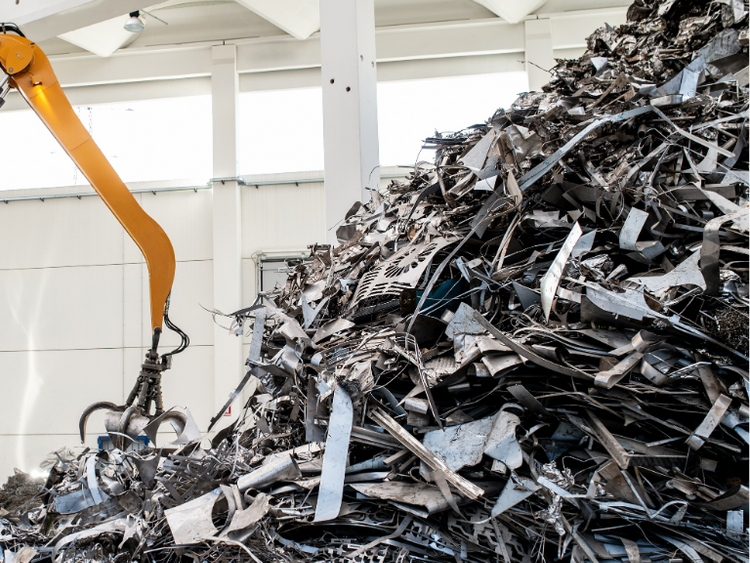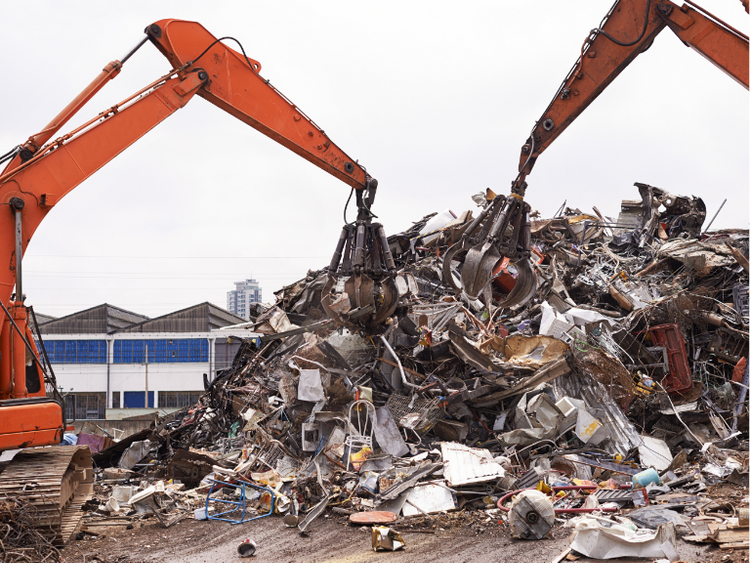Scrap Prices North America

SMU Scrap Sources See Small Decline for Obsolete Grades in August
Written by Tim Triplett
July 24, 2018
The ferrous scrap market is showing small signs of weakness looking ahead to August, report Steel Market Update sources, who say prices on obsolete grades such as shredded and heavy melt are likely to decline anywhere from $5 to $20 per ton next month, while pricing of busheling and bundles will remain unchanged.
Demand for scrap domestically remains firm, but shredders are generating enough material to keep up, said one dealer in the East. Prime scrap plant closures are ending, so flow will return to normal soon. The DRI/HBI plants are running again. Scrap demand from overseas has eased, and prices have dropped as a result. “It’s difficult to judge the reason for this, but I would be surprised if Section 232 didn’t have a hand in it,” he said. Taken together, these factors point to busheling prices moving sideways and HMS and shredded taking a $20 drop, he predicted.
Market sentiment is considerably more bearish than it has been in a while, reports another source in the Northeast. Some of that is talk as the mills would like to bring scrap prices a little lower, perhaps knowing that finished prices have peaked. Some is a reflection of a weaker export market and healthy seasonal supply. Domestic demand remains firm for August, however. “I don’t see scrap prices rising, but it remains to be seen whether they stay sideways or step down incrementally in August by $10 to $20. There is not as much shred in the market as there was at the end of June, and that has been the driver of the bearish sentiment in the market chatter,” he said.
Much of the current thinking is that obsolete grades will drop in price next month while busheling and bundles will be unchanged. How much prices will decline is uncertain, ranging from $5 to $20 per ton, and the change could vary from region to region, said scrap analyst Mike Marley of World Steel Exchange Marketing.
The prime industrial grades only rose by $10 per ton this month in the Midwest steelmaking regions, but not in the South and Southeast. In a month like July when the big EAF flat-rolled mills were running at 95 percent of their capacity (Nucor) and 105 percent (SDI), dealers expected a stronger push for the prime scrap and higher prices. Shredded scrap and heavy melt prices, on the other hand, were unchanged, though a few late buyers in the Midwest were able to obtain lower offers, an indicator of some last-minute panic sellers, Marley said.
Prime grades will be unchanged because demand for sheet is still strong in the U.S. market. Several dealers with industrial accounts, both automotive and nonautomotive, report they are busy, and more concerned about getting enough steel regardless of the price. As long as they can get what they need from domestic mills and service centers, they won’t push for imports of cheaper steel.
In the past two or three months, the domestic sheet steelmakers bought a lot of prime scrap from Canada and western Europe to offset the anticipated July decline in the scrap output from auto stampers. Flows of industrial scrap should probably be up in August, but most sheet makers won’t cut industrial scrap prices because that could encourage steel users to demand lower steel prices, Marley said.
Most dealers are expecting lower shred and HMS prices next month. They started cutting their feedstock (old cars and other shreddables) price a month ago because of the weaker Chinese demand for zorba, the aluminum-rich residue from auto shredders. The demand and price for that material has fallen sharply in the past two months. Cutting their buying prices for junk cars is aimed at preserving their profit margins, which for some is the money they get for the zorba.
The domestic market is oversupplied with shredded scrap, both from domestic and foreign scrap yards. Export has weakened. Turkey hasn’t bought much and the exporters in western Europe and the Baltic Sea regions are underselling their U.S. rivals. Though domestic mills have overpaid for the foreign scrap, it has helped them avoid paying higher prices for domestic supplies. They have leveraged those additional supplies in their bargaining on prices with domestic scrap dealers, Marley said.
Along with excess shredded, many yards are seeing an increase in the flows of demolition scrap. Much of this is coming from bridge and highway construction projects and cleanouts for remodeling of nonresidential buildings. Lastly, warmer temperatures and scheduled maintenance outages have limited production at some mills. That has reduced their scrap consumption and added to the excess. This includes both scrap on the ground at their mills and the tonnage on route to the mill, though the uncertainty of deliveries by truck and rail still troubles both mill buyers and scrap dealers, Marley added.
John Harris, president of Aaristic Services, Inc., reports that scrap markets globally are soft with both Turkey and Far East HMS 80/20 running around $330 to $335/MT delivered. Similarly, NAFTA pricing for cut grades is likely to drift lower with reduced volumes of export cargoes at reduced prices. Prime scrap could also readjust downward as the Nucor DRI facility comes back on line, reducing current pressure on demand, he said.
If potential tariff restrictions on autos and auto parts move forward, prime scrap could again come under pressure. Currently, the main import of scrap entering U.S. is prime scrap coming from Canada and the EU. If sales of autos and parts is reduced in these countries, so will their production of prime scrap. If the U.S. attempts to increase utilization rates, of which prime scrap is a key component, pressure on prime scrap will once again increase. “I suspect that September could be a turning point for the above scenario,” Harris said.

Tim Triplett
Read more from Tim TriplettLatest in Scrap Prices North America

HRC vs. busheling spread widens again in July
The price spread between prime scrap and hot-rolled coil widened marginally again in July.

US ferrous scrap market lands flat in July
The US ferrous scrap market settled sideways in July.

HRC vs. prime scrap spread widens in June
The price spread between HRC and prime scrap widened in June.

Ferrous scrap pricing sideways in June
Ferrous scrap prices in the US have remained stable from May to June.

HRC vs. scrap spread widens over $150/ton in March
The HRC vs. prime scrap spread increased again in March.
